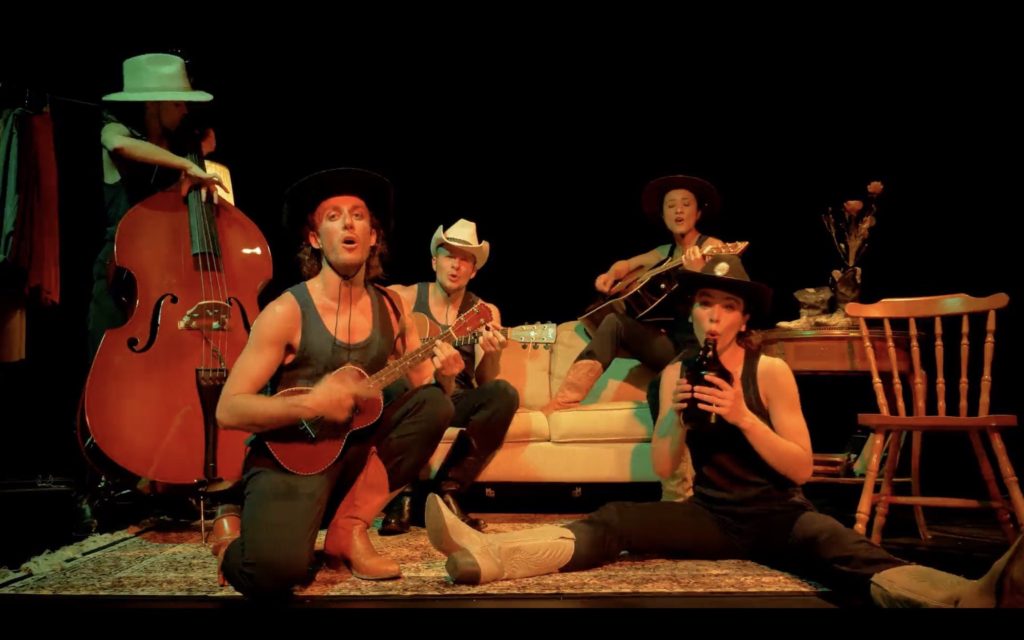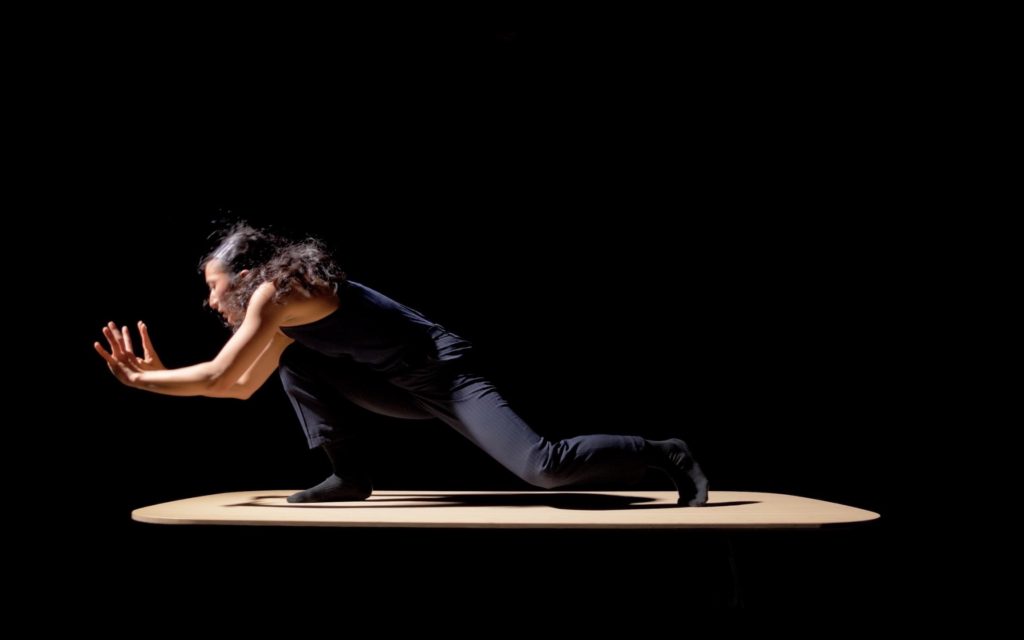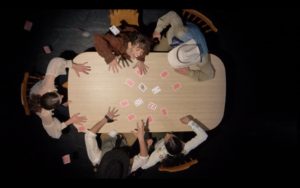Friends, roommates, collaborators: CAMP, a collective for our time - Vancouver Ballet Society
- Home
- Features 2020 - 2023
- Friends, roommates, collaborators: CAMP, a collective for our time

By Tessa Perkins Deneault
About a year after the members of CAMP became a dance collective in 2019, they moved in together — a decision motivated by the difficulty of finding affordable housing in Vancouver and pandemic restrictions that would have made collaborating difficult.
CAMP — Brenna Metzmeier, Eowynn Enquist, Isak Enquist, Ted Littlemore, and Sarah Formosa — is Vancouver’s next generation dance collective. The members’ backgrounds are diverse: Metzmeier is a model and actor who trained at the Victoria Academy of Ballet, Eowynn Enquist is an associate artist with Mascall Dance and alumnus of Simon Fraser University’s dance program, Isak Enquist has a first-degree black belt in shotokan karate (he and Eowynn are a couple), Littlemore is a celebrated drag performer, and Formosa has a long list of film and television credits as a dancer. Between them, they have worked with a who’s who of Vancouver contemporary dance choreographers and bring a shared sensibility to their work as artists who care about craft as much as they care about entertainment.

When they first moved in together, says Formosa, they had elaborate dinners where they would “perform” living together, their habit of impressing each other in the studio following them home. “We’ve had more conversations faster,” adds Isak Enquist, “because we decided to live and work together during a pandemic, and that’s been as hard as it’s been rewarding.” While both their professional and personal relationships have been put to the test, the arrangement helped them feel less isolated.
Formosa, Littlemore, Isak Enquist and Eowynn Enquist spent the summer of 2019 as roommates at Springboard Danse Montréal. Metzmeier was also in Montreal, at TransFormation dance intensive. Having all danced together earlier in the year in Vancouver, the group met up and, upon returning home, decided to band together to train, share knowledge, and support each other’s work.
Then they created a piece for The Dance Centre’s informal series, 12 Minutes Max, in early 2020, which gave them their first taste of choreographing as a group. “We had enough friendship that we could hang out and relax,” says Isak, “and enough professional fear of each other that when we got into the studio, we snapped out of it and really cared what each other had to offer.”

Since that studio showing, CAMP has been busy. The collective presented their first full-length work, WANTED, at the Vancouver International Dance Festival last spring, and shared their second piece, PAM, at this year’s Dancing on the Edge Festival. The pieces show their creative breadth: WANTED is narrative-based with voiceover, exploring both the dark side and the humour associated with the image of the cowboy. PAM is a stripped-down, postmodern piece fusing many dance styles and a single cultural reference of Pam cooking oil.
The group not only works as a collective but often as part of their individual projects. When working for each other, there is a clear leader and final decisions come easier. As a collective, they consider all ideas and ensure everyone is included. “In a lot of ways, we’re working on the art of collaborating,” says Isak. “Whenever the five of us are working together, there’s this mysterious non-leader leading the room.” Littlemore uses the metaphor of a Ouija board to describe the process — everyone’s hand is in the game, but nobody is directing the action.
Through refinement of their collaborative process, a few guiding principles have emerged. They won’t say no to any idea right away, and they strive to create a space where everyone’s ideas are welcomed. They also try not to take anything too seriously. “There has to be a willingness that everything you bring in might become a joke,” says Isak, “which is as challenging as it sounds. But then it’s also really easy to walk in and say, I have this idea, and if it doesn’t work out it’s fine because it’s just a joke.” They value humour in their work and, as their name implies, campiness.

Another goal is to make their work accessible. With WANTED, they felt audiences could relate to the cowboy character. With PAM, which was more abstract, “There was something really satisfying about making a piece that is super dancey, very athletic and quite campy,” says Formosa. “And people were so excited to tell us they have Pam oil at their house,” she laughs.
CAMP is a unique collective for our time — one that is much more than a professional relationship, with the flexibility to focus on training and research, create new works, and take long breaks to accommodate individual projects. “A lot of the feedback we’ve gotten is: ‘Be careful, collectives never succeed,’” says Littlemore. “I feel like we’re succeeding, and we’re really enjoying the work of trying to make it succeed.”
No matter where they are in the world or what they’re working on, the group is committed to making CAMP a long-term endeavour. “Keeping it going as long as we can is definitely the goal,” says Isak. “We purposely haven’t signed contracts because the collective needs to be something that’s fluid and able to adapt. Maybe one day all of us will be living in different parts of the world and meeting up in the Banff Centre to do a residency — that’s a fantasy.”
For now, CAMP is taking a break from making new work to focus on what they love about being a collective: training together and helping each other improve as dance artists. They are looking forward to technical residencies this winter where they plan to adapt WANTED, originally a livestreamed piece, to the stage.
“There’s this idea that if you’re not making work, you’re not relevant,” says Formosa, “and that’s just not true. There’s always that insecurity, thinking you have to keep making things, you have to take every opportunity. It’s been a lot of unlearning that structure and learning how to create space for people to have multiple dreams and multiple careers outside of this.”

